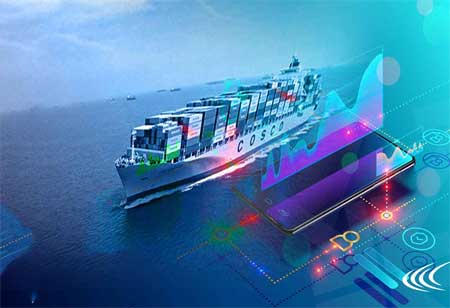THANK YOU FOR SUBSCRIBING
THANK YOU FOR SUBSCRIBING

By
Logistics Transportation Review | Wednesday, January 31, 2024
Stay ahead of the industry with exclusive feature stories on the top companies, expert insights and the latest news delivered straight to your inbox. Subscribe today.
Companies have elevated the priority of resilience and plan to further enhance it in the coming years.
FREMONT, CA : Intermodal transportation has made a remarkable comeback in logistics, tracing its roots back to the late 18th century. While its initial use involving horse-drawn carriages became impractical, the modern version of intermodal transportation has emerged as a vital component of global supply chains, offering many advantages. The seamless transition is made possible through standardized containers, enabling easy transfer from one transport mode to another.
Intermodal transportation is significant in diverse geographical factors necessitating integrating multiple transport methods. With numerous nations, including vast countries like China, and numerous islands accessible primarily by sea or air, intermodal logistics becomes crucial for expanding reach and enhancing efficiency. For instance, a shipment can be loaded onto a truck, transferred to a railway station, loaded onto a barge at a port, and ultimately reach its destination country without container changes, with only a single customs inspection en route. The efficiency applies to imported goods, following a similarly streamlined process.
Intermodal freight transport positively impacts various aspects of the supply chain, including sourcing, customs processes, and delivery. While understanding the definition of intermodal transportation is insightful, the many benefits have prompted many companies to adopt the approach. While post-pandemic resilience has taken precedence over cost reduction, global economic challenges have compelled logistics managers to seek cost-saving opportunities. Intermodal transportation facilitates more efficient cargo movement, reducing delivery time and saving costs. The efficiency is partly due to the increased flexibility provided by various transportation options and standardized containers, which minimize the time spent loading and unloading cargo.
Goods remain within their containers until their final destination, reducing handling costs and streamlining customs processes. The reduced shipping and handling time associated with intermodal logistics significantly improves overall speed, enhancing transportation capacity. Intermodal logistics allows for the optimal use of transportation methods at each journey stage, minimizing wasted container capacity and mitigating potential bottlenecks. Profitability often took precedence over sustainability. The two aspects are no longer mutually exclusive. Consumers now place greater importance on environmental consciousness and prefer products from companies prioritizing sustainability.
Transport efficiency is improved through intermodal logistics, reducing the number of trucks involved in the supply chain and alleviating traffic congestion. Intermodal logistics remains one of the most effective ways to enhance supply chain resilience. Companies gain flexibility to respond to potential disruptions by reducing reliance on one mode of transportation or region. It improves inventory management and customer satisfaction and minimizes the risk of out-of-stock products.
I agree We use cookies on this website to enhance your user experience. By clicking any link on this page you are giving your consent for us to set cookies. More info





